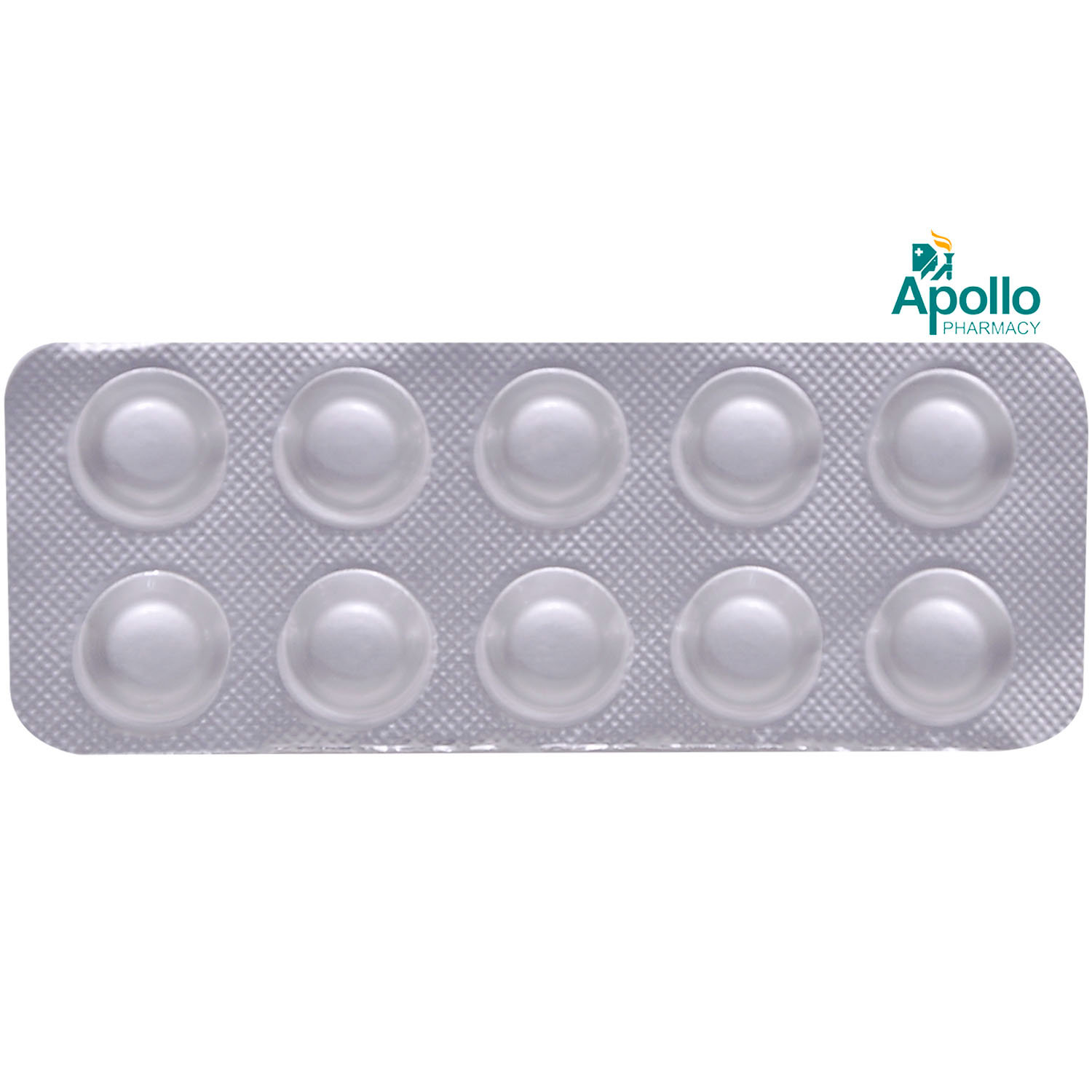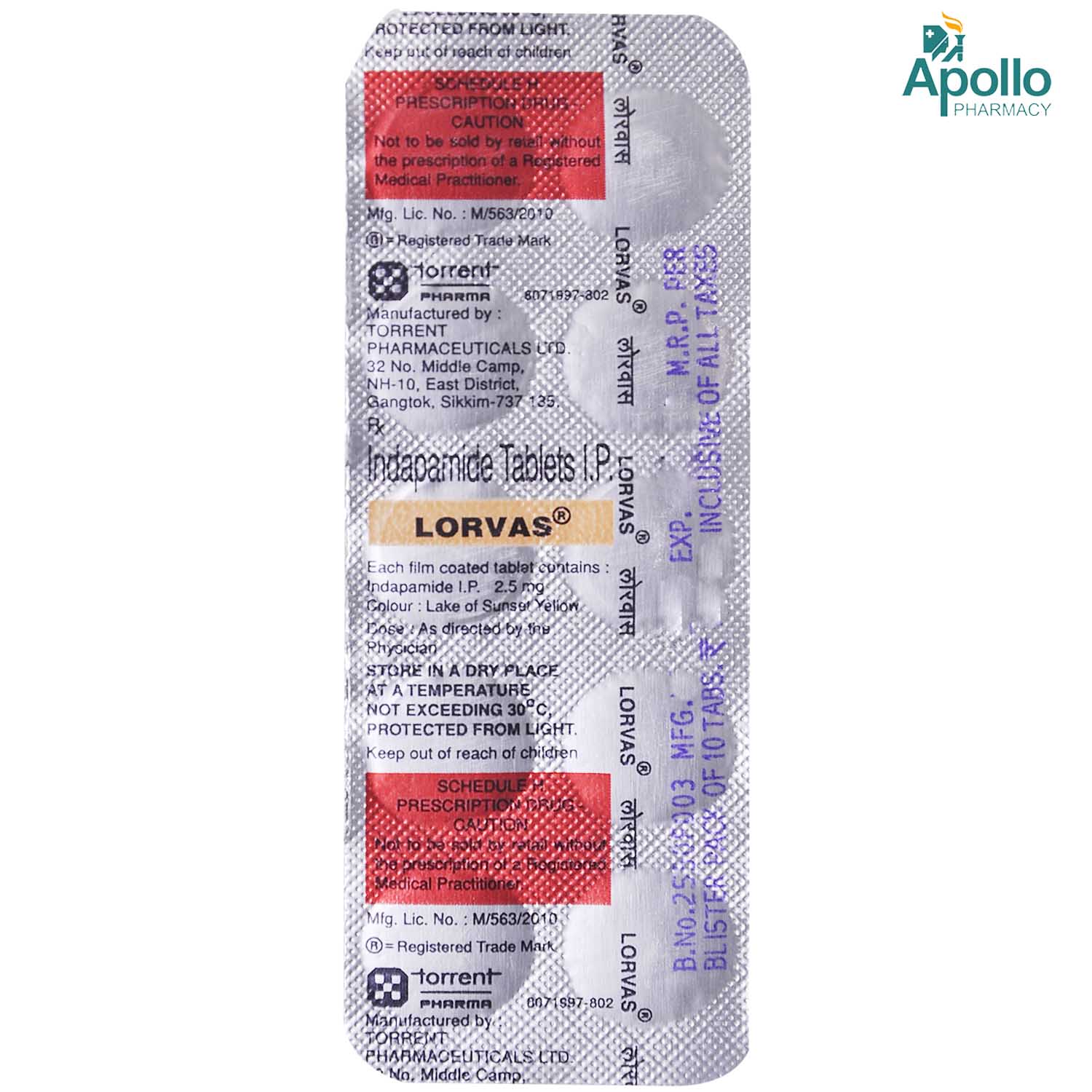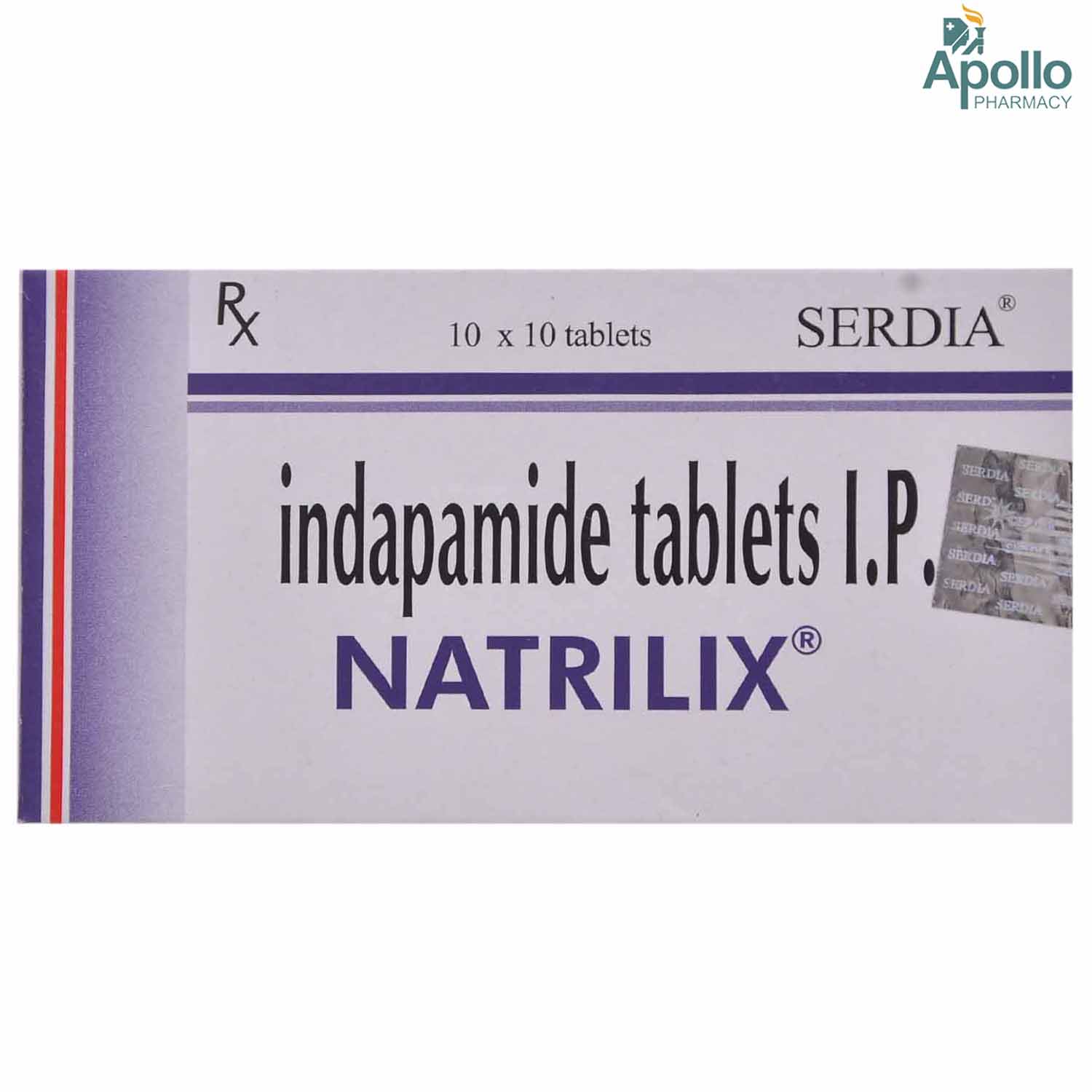Lorvas Tablet


MRP ₹127
(Inclusive of all Taxes)
₹19.1 Cashback (15%)
know your delivery time
Provide Delivery Location
Composition :
Manufacturer/Marketer :
Consume Type :
Expires on or after :
Return Policy :

Secure Payment

Trusted by 8 Crore Indians

Genuine Products
Therapeutic Class
Country of origin
Manufacturer/Marketer address
Author Details
We provide you with authentic, trustworthy and relevant information
Disclaimer
Alcohol
Safe if prescribed
It is best to avoid or limit alcohol intake. Alcohol may aggravate the side effects and may cause a sudden drop in blood pressure and dizziness.
Pregnancy
Consult your doctor
The use of Lorvas Tablet is not allowed during pregnancy until or unless prescribed by the doctor. Lorvas Tablet can only be used during the pregnancy if the benefits of Lorvas Tablet are more than the risks.
Breast Feeding
Consult your doctor
Lorvas Tablet tends to pass in the breast milk, so talk to your doctor before taking this medicine. A high dose of Lorvas Tablet may reduce milk production, so never take it without consulting with a doctor.
Driving
Safe if prescribed
Lorvas Tablet could make a person feel dizzy or drowsy. Therefore it is advised to avoid driving or doing any task that needs a clear vision.
Liver
Consult your doctor
Lorvas Tablet should be taken with caution as this is a diuretic medicine, so if a person is already dealing with liver disease, then Lorvas Tablet may cause serious loss of potassium from the body resulting in vomiting or diarrhoea.
Kidney
Consult your doctor
Lorvas Tablet could cause a high level of nitrogen in the body. If a person is having trouble urinating, then the doctor will not allow the usage of Lorvas Tablet . However, the use of Lorvas Tablet is contraindicated in patients whose kidneys cannot produce urine.
Children
Safe if prescribed
Lorvas Tablet is not approved in children younger than 18 years of age.
Product Substitutes
About Lorvas Tablet
Lorvas Tablet belongs to a group of medicines “thiazide diuretic” primarily used for the treatment of hypertension (high blood pressure). Additionally, Lorvas Tablet is used to reduce the risk of heart failure and oedema (a build-up of fluid in the body). A Thiazide diuretic prevents the body from absorbing excessive salt that may cause fluid retention. Hypertension is a medical condition in which the blood exerts high pressure against the walls of blood vessels. Due to this, the heart has to work harder to pump the supply of blood in the whole body. Hypertension can put a person on severe health complications, including stroke, heart failure, heart attack, and aneurysm.
Lorvas Tablet contains Indapamide, and it is only available on prescription. It works by inhibiting the reabsorption of sodium in the body, resulting in an increase in chloride, sodium, and water excretion through urine. The shift in electrolytes and sodium levels reduces vascular resistance and makes the heart work normally. The production of diuresis and removal of excessive salt and fluid helps to lower blood pressure.
Lorvas Tablet is an orally administered drug. You can take Lorvas Tablet with food or without food. It should be swallowed whole with a glass of water. Do not chew, bite, or break it. Your doctor will advise you on how often you take your tablets based on your medical condition. Sometimes, you may experience dehydration, dizziness, headache, fatigue, nausea, itching, and abdominal pain. Most of these side effects of Lorvas Tablet do not require medical attention and gradually resolve over time. However, if the side effects are persistent, reach out to your doctor.
Lorvas Tablet should not be stopped even if you feel better without consulting your doctor, as stopping a sudden intake of Lorvas Tablet may worsen your condition and increase the risk of future heart problems. Lorvas Tablet may lower the potassium level in the body, so ask your doctor about how to add it to the diet. Please inform your doctor if you have had an allergic reaction to Lorvas Tablet , is pregnant or get pregnant, is breastfeeding, have gout, liver disease, kidney problems, heart failure, diabetes, a heart valve problem, or heart attack.
Uses of Lorvas Tablet
Medicinal Benefits Mweb
Key Benefits
Lorvas Tablet is prescribed for treating high blood pressure. Being a diuretic medication, Lorvas Tablet enhances the excretion of sodium and water through urine by restricting sodium absorption in the nephron tubes. If high blood pressure is not controlled for a longer time, then arteries and the heart will not be able to function properly. This may further increase the chances of damage to brain blood vessels, resulting in heart attack and serious kidney failure. However, taking Lorvas Tablet at the right time can control the blood pressure and make the heart function properly.
Directions for Use
Side Effects of Lorvas Tablet
- Dizziness
- Blurred vision
- Fatigue
- Nausea
- Abdominal pain
- Dry mouth
- Headache
- Constipation
- Diarrhoea
- Itching
- Rashes
- Shortness of breath
Drug Warnings
Lorvas Tablet can increase the chances of light-headedness so rise slowly if you are sitting and avoid operating any machine or doing any work that needs mental alertness. Before taking Lorvas Tablet , tell the doctor if you have any allergies to the active and inactive ingredients present in it, have a history including anuria (kidneys aren't producing urine)/ renal dysfunction, fluid or electrolyte imbalance, liver disease, lupus erythematosus (an autoimmune inflammatory disease-causing scaly red patches on the skin), and asthma. Lorvas Tablet may lower down the potassium level in the body, so ask the doctor about how to add it to the diet. Lorvas Tablet should only be given during pregnancy when the doctor strongly suggests it. Lorvas Tablet could pass in the breast milk, so ask your doctor if you are a breastfeeding woman before taking it. Lorvas Tablet should not be given to children as safety has not been established.
Drug-Drug Interactions
Drug-Drug Interactions
Login/Sign Up
Taking Droperidol with Lorvas Tablet can lead to severe heart problems.
How to manage the interaction:
Taking Droperidol with Lorvas Tablet is not recommended, but can be taken if prescribed by the doctor.
Taking Protriptyline along with Lorvas Tablet can lead to serious heart problems.
How to manage the interaction:
Taking Protriptyline with Lorvas Tablet is not recommended, but can be taken if prescribed by the doctor.
Taking Lorvas Tablet with Thioridazine can increase the risk of heart problems.
How to manage the interaction:
Taking Thioridazine with Lorvas Tablet is not recommended, but can be taken if prescribed by the doctor.
Co-administration of Lorvas Tablet with Dofetilide can increase the risk of abnormal heart rhythm.
How to manage the interaction:
Taking Lorvas Tablet and Dofetilide together can result in an interaction, it can be taken if a doctor has advised it. However, if you experience sudden dizziness, fainting, shortness of breath, rapid heartbeat, weakness, muscle pain, cramps, nausea, or vomiting, consult a doctor immediately. Do not discontinue any medications without a doctor's advice.
Co-administration of Amiodarone together with Lorvas Tablet may raise the risk of an abnormal heart rhythm.
How to manage the interaction:
Even though Amiodarone and Lorvas Tablet interact, they can be used if prescribed by a doctor. If you experience abrupt dizziness, lightheadedness, fainting, shortness of breath, or rapid heartbeat, painful muscle cramping, get medical attention. Do not discontinue any medications without consulting a doctor.
Taking Lorvas Tablet with Lithium can increase the blood levels of lithium.
How to manage the interaction:
Taking Lorvas Tablet with Lithium can result in an interaction, but it can be taken if a doctor has advised it. However, if you experience symptoms like loose stools, vomiting, drowsiness, shaking of hands and legs, thirst, increased urination, lack of coordination, or muscle weakness, consult a doctor. Do not discontinue any medications without a doctor's advice.
Co-administration of Lorvas Tablet with Arsenic trioxide can increase the risk of abnormal heart rhythms.
How to manage the interaction:
Taking Lorvas Tablet and Arsenic trioxide together can result in an interaction, it can be taken if a doctor has advised it. However, if you experience sudden dizziness, lightheadedness, fainting, shortness of breath, rapid heartbeat, weakness, tiredness, drowsiness, confusion, muscle pain, cramps, nausea, or vomiting, consult a doctor immediately. Do not discontinue any medications without a doctor's advice.
Co-administration of Tizanidine with Lorvas Tablet may reduce blood pressure greatly leading to side effects.
How to manage the interaction:
Although taking Lorvas Tablet and Tizanidine together can cause an interaction, it can be taken if a doctor has suggested it. However, if you notice any of these signs - feeling dizzy, having a headache, feeling lightheaded, or fainting, Consult a doctor. Do not discontinue any medications without a doctor's advice.
Using Aminolevulinic acid with Lorvas Tablet, your skin becomes more sensitive to strong light. This increases your risk of getting a bad sunburn.
How to manage the interaction:
Although taking Lorvas Tablet and Aminolevulinic acid together can cause an interaction, it can be taken if a doctor has suggested it. After treatment, you should wait 48 hours before exposing your eyes, and skin, to any bright lights indoors. Do not discontinue any medications without a doctor's advice.
When Lorvas Tablet and Dronedarone are taken together, the risk of an irregular heart rhythm increases.
How to manage the interaction:
Taking Lorvas Tablet and Dronedarone together can possibly result in an interaction, it can be taken if a doctor has advised it. However, if you experience sudden dizziness, lightheadedness, fainting, shortness of breath, rapid heartbeat, weakness, tiredness, drowsiness, confusion, muscle pain, cramps, nausea, or vomiting, consult a doctor immediately. Do not discontinue any medications without a doctor's advice.
Drug-Food Interactions
Drug-Food Interactions
Login/Sign Up
Lentils, Orange Juice, Oranges, Raisins, Potatoes, Salmon Dried, Spinach, Sweet Potatoes, Tomatoes, Coconut Water, Beans, Beetroot, Broccoli, Bananas, Apricots, Avocado, Yogurt
How to manage the interaction:
Lorvas Tablet may decrease the potassium levels in the body. Increase consumption of potassium-rich foods during Lorvas Tablet therapy
Drug-Diseases Interactions
Drug-Diseases Interactions
Login/Sign Up
Drug-Drug Interactions Checker List
- FUROSEMIDE
- TORSEMIDE
- AMLODIPINE
- RAMIPRIL
- BACLOFEN
- LEVODOPA
- CLONIDINE
- AMBROXOL
- LITHIUM
- RISPERIDONE
- IBUPROFEN
- NAPROXEN
- WARFARIN
Habit Forming
Diet & Lifestyle Advise
- Consume antioxidant-rich food. Blueberries, cherries, tomatoes, squash, and bell peppers are high in antioxidants.
- Eat natural diuretic foods. Asparagus, beets, green beans, grapes, onion, leafy greens, pineapple, leeks, pumpkin, and garlic are all-natural diuretic foods.
- Use healthy cooking oils like soybean, olive, canola, and coconut oil.
- You should avoid refined foods such as white bread, spaghetti, sugar, and red meat.
- Reduce or eliminate Trans fatty acids, which are found in commercially baked items such as cookies, cakes, crackers, French fries, onion rings, doughnuts, and processed foods.
- Avoid consumption of too much salt or salty food.
- Keep your weight under control with a BMI of 19.5-24.9.
- Regular physical activity or exercise like walking improves your blood flow.
- When possible, elevate your legs or the swollen area on a chair or pillows.
- Avoid standing or sitting for extended periods of time.
- Avoid chronic stress as it can raise your blood pressure.
- Spend time with your loved ones to cope with stress and practice mindfulness techniques.
- Quitting smoking and alcohol consumption is the best strategy to lower the risk of many health complications.
All Substitutes & Brand Comparisons
RX
Out of StockIndicard 2.5mg Tablet
Colgen Pharma
₹26.72
(₹1.72 per unit)
84% CHEAPERRX
Out of StockFanton 2.5mg Tablet
₹40
(₹3.6 per unit)
68% CHEAPERRX
Out of StockDIURIX TABLET
Bal Pharma Ltd
₹45
(₹4.05 per unit)
64% CHEAPER

Have a query?
Buy best Cardiology products by
Torrent Pharmaceuticals Ltd
Sun Pharmaceutical Industries Ltd
Lupin Ltd
Intas Pharmaceuticals Ltd
Cipla Ltd
Micro Labs Ltd
Macleods Pharmaceuticals Ltd
Abbott India Ltd
Ajanta Pharma Ltd
Ipca Laboratories Ltd
Eris Life Sciences Ltd
Mankind Pharma Pvt Ltd
Lloyd Healthcare Pvt Ltd
Dr Reddy's Laboratories Ltd
Glenmark Pharmaceuticals Ltd
Emcure Pharmaceuticals Ltd
Alembic Pharmaceuticals Ltd
Alkem Laboratories Ltd
East West Pharma India Pvt Ltd
USV Pvt Ltd
Zydus Healthcare Ltd
Aristo Pharmaceuticals Pvt Ltd
Elbrit Life Sciences Pvt Ltd
J B Chemicals & Pharmaceuticals Ltd
Zydus Cadila
Akumentis Healthcare Ltd
Alteus Biogenics Pvt Ltd
Hbc Life Sciences Pvt Ltd
Fusion Health Care Pvt Ltd
Troikaa Pharmaceuticals Ltd
La Renon Healthcare Pvt Ltd
Corona Remedies Pvt Ltd
Jubilant Lifesciences Ltd
Medley Pharmaceuticals Ltd
Knoll Healthcare Pvt Ltd
Msn Laboratories Pvt Ltd
Zuventus Healthcare Ltd
Cadila Pharmaceuticals Ltd
Blue Cross Laboratories Pvt Ltd
Lividus Pharmaceuticals Pvt Ltd
Morepen Laboratories Ltd
Ranmarc Labs
Shrrishti Health Care Products Pvt Ltd
Sanofi India Ltd
Steris Healthcare
Elder Pharmaceuticals Ltd
Primus Remedies Pvt Ltd
Unison Pharmaceuticals Pvt Ltd
Eswar Therapeutics Pvt Ltd
Knoll Pharmaceuticals Ltd
Tas Med India Pvt Ltd
Systopic Laboratories Pvt Ltd
Indiabulls Pharmaceuticals Pvt Ltd
Leeford Healthcare Ltd
Sinsan Pharmaceuticals Pvt Ltd
Biochem Pharmaceutical Industries Ltd
Cadila Healthcare Ltd
Azkka Pharmaceuticals Pvt Ltd
Nirvana India Pvt Ltd
Orsim Pharma
Prevego Healthcare & Research Pvt Ltd
Econ Healthcare
Elinor Pharmaceuticals (P) Ltd
FDC Ltd
Sunij Pharma Pvt Ltd
Nicholas Piramal India Ltd
Astra Zeneca Pharma India Ltd
Pfizer Ltd
Lia Life Sciences Pvt Ltd
Shine Pharmaceuticals Ltd
Elicad Pharmaceuticals Pvt Ltd
Indoco Remedies Ltd
Proqol Health Care Pvt Ltd
Vasu Organics Pvt Ltd
Biocon Ltd
Opsis Care Lifesciences Pvt Ltd
Johnlee Pharmaceuticals Pvt Ltd
Merck Ltd
Wockhardt Ltd
Auspharma Pvt Ltd
Ergos Life Sciences Pvt Ltd
Lakshya Life Sciences Pvt Ltd
Ordain Health Care Global Pvt Ltd
Pficus De Med Pvt Ltd
ALICAN PHARMACEUTICAL PVT LTD
RPG Life Sciences Ltd
Glynis Pharmaceuticals Pvt Ltd
Orris Pharmaceuticals
Samarth Life Sciences Pvt Ltd
Aprica Pharmaceuticals Pvt Ltd
Aretaeus Pharmaceuticals Pvt Ltd
Koye Pharmaceuticals Pvt Ltd
Neocardiab Care
Retra Life Science Pvt Ltd
Alniche Life Sciences Pvt Ltd
Alvio Pharmaceuticals Pvt Ltd
Arkas Pharma Pvt Ltd
Atos Lifesciences Pvt Ltd
Divine Savior Pvt Ltd
Metalis Lifesciences Pvt Ltd
Customers Also Bought
Recommended for a 30-day course: 3 Strips








